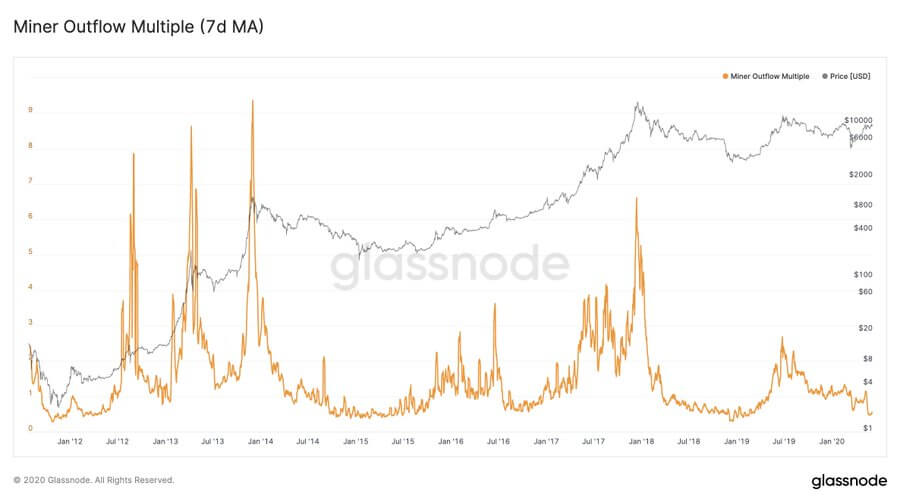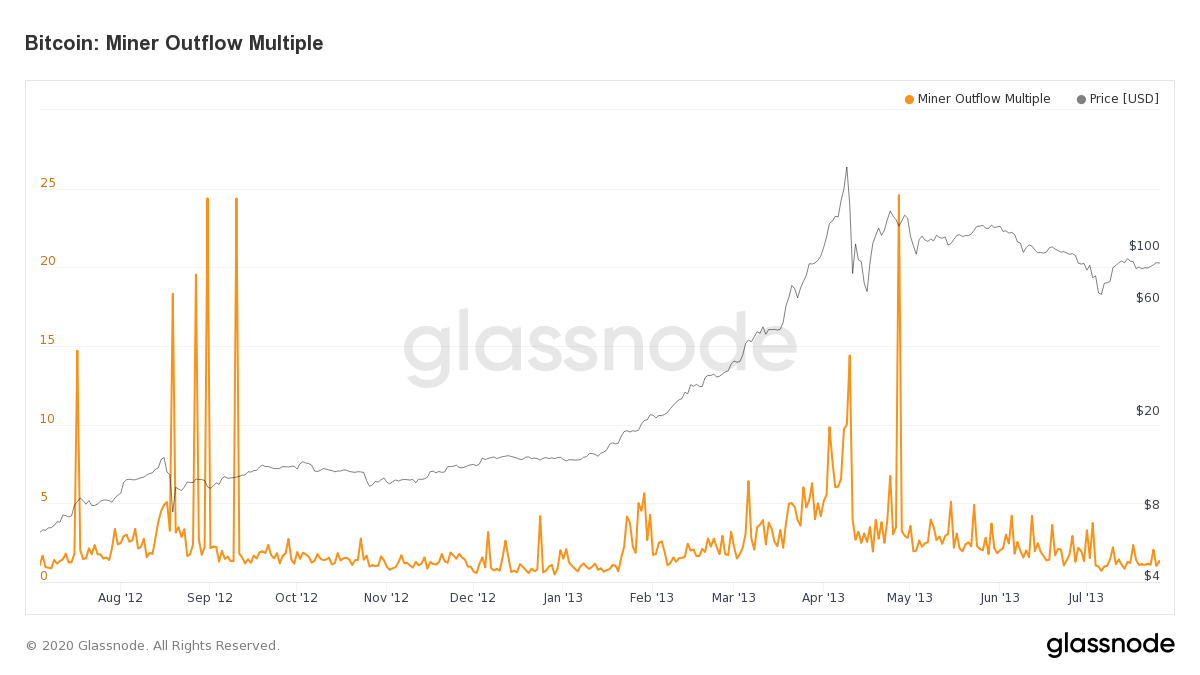Weeks after Bitcoin’s now-concluded halving event, data collated by on-chain analytics firm Glassnode shows “weaker” miners might have sold all their digital holdings.Meanwhile, larger, more established players continue to hold their rewards and are presumably adding to their BTC stash each week.Strong miners HODLAs per Glassnode’s Miner Outflow Multiple (MOM) for Bitcoin, outflows for the currency from miner pools are reaching a new one-ear-low, considering the metric’s 365-day moving average.

“Healthy bitcoin miners are hodling, and struggling miners have little BTC left to sell. Bullish.”
Healthy bitcoin miners are hodling, and struggling miners have little BTC left to sell. Bullish. https://t.co/MFjaILwLlL
— Tuur Demeester (@TuurDemeester) June 5, 2020
Activity may not be bullishA glance at Glassnode’s data shows miner activity steadily decreasing since the end of May. The metrics further suggests a period after halving when BTC sales almost totaled miner incomes.However, not all are on board with a bullish sentiment. Mining firm F2Pool quoted Charlie Morris from Bytetree, another crypto-data analytics firm in a tweet. The latter indicates miners may not offload inventory in market conditions they determine as unsatisfactory. Morris notes:
“(Miners) HODL when the market is weak, not because they are bullish, but because the market can’t take it. When they can sell, it is an indication that the market is well supported.”
Miners fully depend on encashing Bitcoin rewards to fund their rather expensive operations. Mining setups are not a cheap affair, requiring around-the-clock labor maintenance, temperature control, quick repair in times of breakdown, apart from incurring massive electricity costs.









